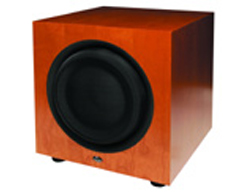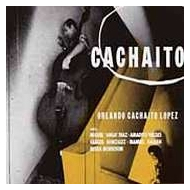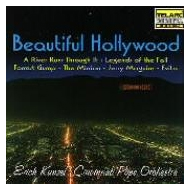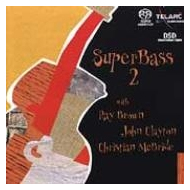You are reading the older HTML site
Positive Feedback ISSUE 8
august/september 2003
linn
SIZMIK subwoofer
as reviewed by Victor Chavira and Robert H. Levi

VICTOR CHAVIRA'S SYSTEM: LOUDSPEAKERS ELECTRONICS SOURCE CABLES ACCESSORIES
|
 Subwoofers
are a mixed bag. Set the level too high and excessive low bass information overwhelms the
music. Set the crossover too high and midbass images become smeared and indistinct. Place
the sub in the wrong part of the room and the soundstage shifts or falls apart. As a
former Magnepan user, I was often tempted to supplement the low-end impact of my 1.6s with
a subwoofer, but cost and compatibility issues prevented me from seriously pursuing the
idea. My new Marten Monks have excellent low-end bass impact for stand-mounted speakers.
They produce room-filling bass down to 41 cycles, with useful output from the rear port
cutting off at 38 cycles. For the music I listen to most often, the Monks provide very
satisfying levels of bass.
Subwoofers
are a mixed bag. Set the level too high and excessive low bass information overwhelms the
music. Set the crossover too high and midbass images become smeared and indistinct. Place
the sub in the wrong part of the room and the soundstage shifts or falls apart. As a
former Magnepan user, I was often tempted to supplement the low-end impact of my 1.6s with
a subwoofer, but cost and compatibility issues prevented me from seriously pursuing the
idea. My new Marten Monks have excellent low-end bass impact for stand-mounted speakers.
They produce room-filling bass down to 41 cycles, with useful output from the rear port
cutting off at 38 cycles. For the music I listen to most often, the Monks provide very
satisfying levels of bass.
LOS ANGELES REPORTS SIZMIK ACTIVITY
When the Linn SIZMIK arrived at Positive Feedback, my system was nominated as its natural partner. I was skeptical at first, as I felt that subs were for home theater. Even though I sometimes use my system for that purpose, the ratio is 95% music to 5% movies, and when I do watch a movie, it’s likely to be about music (such as the essential Standing in the Shadows of Motown, documenting the unheralded Motown Records rhythm section known as the Funk Brothers). Furthermore, any resident of Los Angeles County can tell you that real car crashes don’t sound like they do in the movies—collisions consist of frightening levels of metallic midrange energy followed by an eerie silence before sirens are heard in the distance.
The Linn SIZMIK was not exclusively designed to convey the dramatic bombast of movies—music is at the heart of every Linn product. The SIZMIK features a long-throw 12-inch paper cone driver in a compact sealed enclosure. Power is delivered by a 500-watt switch mode amplifier. The sub is highly adjustable, with a wide range of parameters. After some experimentation, I set the sub to operate between 2 and 50 cycles. This left about a 10-cycle overlap with my main speakers, but interference was not an issue as I set the sub’s output very low. The SIZMIK was connected to my Magnum Dynalab 208 receiver with two meters of Monster Cable’s dedicated subwoofer interconnect.
I live in a typical post-war suburban Southern California home with a raised wood floor. My carpeted listening/living room is 20 by 13 feet, and is open on one end to the dining area. The entire place is rather bass friendly, especially the hallway behind the listening position, which loads up with low-end energy like a walk-in transmission line. Fortunately, the room is relatively free of prominent nodes or suck-outs in the bass region. My living/listening room problems have more to do with early reflections and a high level of ambient noise.
Linn calls the SIZMIK a bass reinforcement loudspeaker. After living with it for several weeks, I am inclined to agree. Musical content and flow were undisturbed by the SIZMIK’s presence, but it provided two distinct improvements. First, it had the ability to transform my listening space into that of the recording venue. Second, my main speakers did less work to produce convincing dynamics.
 Buena Vista Social Club bassist Orlando Cachaito Lopez’s self-titled CD Cachaito
is a good example of the Linn’s transformative quality. The recording begins with a
phone call that Orlando answers, "Si, siempre con swing." ("Yes, always
with swing.") With the Linn in place, the dimensions of my room expanded by about
twenty feet in every direction, mimicking the large recording studio at EGREM in Havana.
Voices and instruments had longer reverberation, and bass rumbled with newfound authority.
Buena Vista Social Club bassist Orlando Cachaito Lopez’s self-titled CD Cachaito
is a good example of the Linn’s transformative quality. The recording begins with a
phone call that Orlando answers, "Si, siempre con swing." ("Yes, always
with swing.") With the Linn in place, the dimensions of my room expanded by about
twenty feet in every direction, mimicking the large recording studio at EGREM in Havana.
Voices and instruments had longer reverberation, and bass rumbled with newfound authority.
Another CD that benefited from SIZMIK service was The Classical Jazz Quartet Plays Bach, featuring the masterful bass of Ron Carter. This recording, which does not have prodigious amounts of low bass, demonstrated again how the SIZMIK enhances the perception of volume in the listening environment. The soundstage dimensions increased twofold, while the subharmonic overtones of drums and bass could be felt through the floorboards and along the walls.
 Beautiful Hollywood
is a collection of film music as performed by Erich Kunzel and the Cincinnati Pops
Orchestra on Telarc. One of my favorite themes on the disc is "Robert and Mary"
from the movie Rob Roy. This track features a swelling orchestra crescendo that is
punctuated by tympani and a large bass drum. The effect of the SIZMIK in this climactic
moment was quite dramatic. It was as if a gentle shockwave emanated from the center of the
soundstage, leaving a hush in its wake for solo viola to pick up the lilting melody and
close the piece.
Beautiful Hollywood
is a collection of film music as performed by Erich Kunzel and the Cincinnati Pops
Orchestra on Telarc. One of my favorite themes on the disc is "Robert and Mary"
from the movie Rob Roy. This track features a swelling orchestra crescendo that is
punctuated by tympani and a large bass drum. The effect of the SIZMIK in this climactic
moment was quite dramatic. It was as if a gentle shockwave emanated from the center of the
soundstage, leaving a hush in its wake for solo viola to pick up the lilting melody and
close the piece.
A secondary psycho-acoustic effect resulted when the SIZMIK was on line. Because of its ability to recreate a larger sense of space and volume, I found myself attenuating the volume. The normal setting on my MD 208 is around 12 o’clock. At this level, the Marten Monks have enough power to support the illusion of real music without being too loud. With the SIZMIK underpinning the Monks, I was able to achieve satisfying dynamics at a lower level. My normal setting produced truly house-rocking levels of sound.
The Linn SIZMIK was a very positive performer in the context of my system. It clearly improved the listening experience without smearing the soundstage or contaminating the main speakers. Judicious placement and level setting are critical to achieving the best results. My only criticism of the SIZMIK is its absurdly small control system. Optimal installation of the SIZMIK was made needlessly difficult by my having to crawl around on my knees, then lie face down on the floor to perform adjustments. In spite of this shortcoming, I recommend the SIZMIK for its quick, clean delivery of the subharmonic information imbedded in music and movies. Victor Chavira
ROBERT H. LEVI'S SYSTEM LOUDSPEAKERS ELECTRONICS SOURCES CABLES ACCESSORIES
|
 Famous for
its LP12 turntable, $20,000 CD player, and more, Linn has joined the crowd by designing a
subwoofer for home theater, called the SIZMIK. They make a classy line of loudspeakers,
but they are not as widely known in the U.S. as their electronics. As I installed this
jewel-like cube, finished in a lovely veneer, I wondered if this could be the Scottish
solution to getting a small, high-quality sub for a high end, two-channel audio system at
a reasonable price (about three grand). Read on.
Famous for
its LP12 turntable, $20,000 CD player, and more, Linn has joined the crowd by designing a
subwoofer for home theater, called the SIZMIK. They make a classy line of loudspeakers,
but they are not as widely known in the U.S. as their electronics. As I installed this
jewel-like cube, finished in a lovely veneer, I wondered if this could be the Scottish
solution to getting a small, high-quality sub for a high end, two-channel audio system at
a reasonable price (about three grand). Read on.
The SIZMIK is small—only 17.75 inches high, 16.5 inches wide, and 17.5 inches deep—and weighs 60.8 lbs. It features an exotic 12-inch woofer and a 500-watt switching amp that is capable of 1000-watt peaks, and is available in great looking finishes. It’s loaded with features. Controls for high-pass setting, low-pass setting, course gain, fine gain, bass equalization, phase, even an adjustable standby feature are included. You may use it with a processor, connect it to a preamp, or connect it to an amp. It comes with spikes that will easily pierce any carpet, and its inputs are all RCAs.
If you saw Crouching Tiger, Hidden Dragon, good for you. It has nothing to do with this review—except that you must crouch, lie down on the floor, juggle a flashlight, and press two small buttons in order to make adjustments, all while reading the instructions. It does, thank heaven, remember the settings if you unplug it. I use a REL Stadium III sub with my Avalon Eidolons. It also sells for about three grand, so I thought we had a horse race.
 I
plugged a Kimber Palladian AC cord into the standard IEC connector. First up, the CD
soundtrack from All the Pretty Horses. It has beautiful instrumentals with guitar,
tuba, and drum, plus good vocals. The drum in cut eleven sounded deeper and tighter with
the REL, warmer and fuller with the Linn. The only problem here is "deeper and
tighter" is the goal, not "warmer and fuller." Tweaking the Linn
didn’t help, as the lowest setting on the low-pass filter was 50Hz. All that
adjustment capability, and this is the lowest crossover point? My problem was that I had
no way to keep the Avalons from going down to 30hz and doubling with the Linn. The REL
crossover is set at 26Hz.
I
plugged a Kimber Palladian AC cord into the standard IEC connector. First up, the CD
soundtrack from All the Pretty Horses. It has beautiful instrumentals with guitar,
tuba, and drum, plus good vocals. The drum in cut eleven sounded deeper and tighter with
the REL, warmer and fuller with the Linn. The only problem here is "deeper and
tighter" is the goal, not "warmer and fuller." Tweaking the Linn
didn’t help, as the lowest setting on the low-pass filter was 50Hz. All that
adjustment capability, and this is the lowest crossover point? My problem was that I had
no way to keep the Avalons from going down to 30hz and doubling with the Linn. The REL
crossover is set at 26Hz.
Next up was the Rutter Requiem HDCD from Reference Recordings, on which I focused on cuts one and seven. The end of cut one has a big organ burst with major low chords. The Linn was very full and somewhat fat. The organ was powerful, but not floor shaking. The bass support was subjectively higher, supplementing the richness of the organ but not the bottom octave of sound. Cut seven, "Pie Jesu," a soprano solo with chorus and organ, has amazingly low organ notes that I have been told are below 30hz. Once again, the Linn was fatter and shallower than the REL—not bad, mind you, but not effectively complementing the main speakers. The Linn’s output was powerful, so I cut it way back, but it never became leaner, just less loud. The REL pressurizes the room, and brings the lowest octaves into focus.
 The Telarc SuperBass 2 SACD has three beautiful bass fiddles played
in ensemble at the Blue Note in New York City, recorded live in pure DSD. The richness of
the wood and the intense vibration from these topnotch instruments stand out clearly. The
Linn increased the richness of the basses and enhanced the depth a tad, but the
instruments blurred somewhat and their woody character faded. No matter what setting I
tried, I could not capture the wooden hollowness I was used to hearing. I changed power
cords with little perceptible effect. My favorite Soundstring, Tara, and Palladian cords
could not lean out the Linn. I moved it further from the wall, which helped a bit, but the
sub did not go audibly deeper.
The Telarc SuperBass 2 SACD has three beautiful bass fiddles played
in ensemble at the Blue Note in New York City, recorded live in pure DSD. The richness of
the wood and the intense vibration from these topnotch instruments stand out clearly. The
Linn increased the richness of the basses and enhanced the depth a tad, but the
instruments blurred somewhat and their woody character faded. No matter what setting I
tried, I could not capture the wooden hollowness I was used to hearing. I changed power
cords with little perceptible effect. My favorite Soundstring, Tara, and Palladian cords
could not lean out the Linn. I moved it further from the wall, which helped a bit, but the
sub did not go audibly deeper.
I really don’t know how the SIZMIK will work with two-way monitor speakers or planar dipoles that have little low bass. It might be the perfect match. With a nearly full-range three-way design like the Avalons, the REL clearly bests the Linn. The Linn’s attributes and generous output would appear to work well for home theater, but the competition in the $1500-3000 range is fierce. The Achilles heel of the SIZMIK is its 50Hz crossover point. It does have a bass boost adjustment below 30Hz, but this does not eliminate the doubling frequencies between 30 and 100Hz. If you have full-range loudspeakers and are looking for bass reinforcement, look elsewhere. Robert H. Levi
SIZMIK subwoofer
Retail: $3000
LINN UK
web address: http://www.linn.co.uk
Linn Products
Inc
8787 Perimeter Par Boulevard
Jacksonville, FL 32216
USA
TEL: 904. 645. 5242
email address: [email protected]
